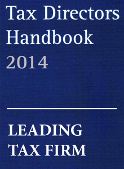
Litigation in Estonia
1 Preliminaries
1.1 What type of legal system has Estonia got? Are there any rules that govern civil procedure in Estonia?
The State of Estonia applies Civil Law and it is part of Continental-Europe's legal system.
Civil procedure is regulated by the Code of Civil Procedure. As a part of European Union, Estonia applies also EU legislation.
1.2 How is the civil court system in Estonia structured? What are the various levels of appeal and are there any specialist courts?
The court system of Estonia includes three levels: the Supreme Court, circuit courts and county courts. County courts hear all the civil matters (first instance), circuit courts hear the appeals coming from the country courts (second instance, located in Tallinn and Tartu) and the Supreme Court reviews the appeals from the circuit courts (court of highest instance, located in Tartu). Special courts do not exist in Estonia.
1.3 What are the main stages in civil proceedings in Estonia? What is their underlying timeframe?
1) Submission of the claim and commencement of matters
2) Notifying participants on the proceeding of action
3) Defendant's response to action
4) Plaintiff's opinion on response to action
5) Hearing of the matter in a court session
6) Judgment of the case
The time period between the date of service of the action on the defendant and the court session is at least 30 days. The length of the proceeding cannot be evaluated precisely, case-by-case approach is applied.
1.4 What is your local judiciary's approach to exclusive jurisdiction clauses?
If exlusive jurisdiction clauses are not in conflict with the limited exclusive jurisdiction of Code of Civil Procedure, courts usually apply it.
1.5 What are the costs of civil court proceedings in Estonia? Who bears these costs?
Procedural expenses are dividend to legal costs and extra-judicial costs incurred by a participant in a proceeding.
1.) Legal costs are the state fee, security and the costs essential to the proceeding.
2.) Extra-judicial costs are for instance, costs related to the expert's assessment in a proceeding
The costs of an action and the procedural expenses of a legal representative of a party are borne by the party against whom the court decides. In cases where ordering payment of the opposing party's costs from the party against whom the court decides would be extremely unfair or unreasonable, the court may decide that the costs must be borne, in part or in full, by the party who incurred the costs. The Estonian government adopts limits to claiming costs of a legal representative from the other party in a proceeding.
In contentious family and filiations matters both parties shall bear their own procedural expenses. The court may divide the procedural expenses differently, if such division of the expenses would be unfair or excessively damage the essential needs of one of the spouses.
In a proceeding on petition, the procedural expenses shall generally be borne by the person in whose interests the decision is made.
1.6 Are there any particular rules about funding litigation in Estonia? Are there any contingency/conditional fee arrangements? Are there rules on security for costs?
Assistance from the state is possible in certain circumstances. It is also possible that person is released from payment of the state fee or other legal cost (in part or fully). Payments of the state fee may be conducted by montly installments.
Defendant may require security from the plaintiff. From the request of the defendant, the court may demand that plaintiff provide security for covering the procedural expences if the plaintiff is not citizen or legal person of Estonia or of any other EU Member State or due to plaintiff's economic status the collection of the expences is clearly impractical.
2 Before Commencing Proceedings.
2.1 Are there any pre-action procedures in place in Estonia? What is their scope?
There are no pre-action procedures in place in Estonia.
2.2 What limitation periods apply to different classes of claim for the bringing of proceedings before Estonian civil courts? How are they calculated? Are time limits treated as a substantive or procedural law issue?
Limitation periods vary from common 3 years up to 10 years (depending on the seriousness of the issue). 30 years apply in a case of ownerships and successions. Claim which does not expire is ownership in relation to arbitrary possession.
Under Estonian Law the time limits are treated as a substantive law issue.
3 Commencing Proceedings
3.1 How are civil proceedings commenced (issued and served) in Estonia? What various means of service are there? What is the deemed date of service? How is service effected outside Estonia? Is there a preferred method of service of foreign proceedings in Estonia?
1.) Filing the action
2.) Court decides whether to accept/ not accept the action
3.) The recipient receives the procedural documents by mail or in the court premises (other ways can be used in certain cases, e.g. bailiff, fax)
Unless otherwise is ruled, the service of procedural documents is done in abovementioned way in foreign state and on extra-territorial citizens. EU regulation may rule otherwise regarding (extra-)judicial documentation in civil and commercial matters.
3.2 Are any pre-action interim remedies available in Estonia? How do you apply for them? What are the main criteria for obtaining these?
There are few ways how pre-action interim remedies in Estonia for the securing of the claim. The court can use them concurrently if needed.
1.) The court can secure the action based on the request of the plaintiff in case there is reason to believe that failure to secure the action renders observance with the judgment impossible.
2.) The court can secure the action based on petition. This is done before the action is filed and the petition must show reasons for retarding the filing of the action.
3.) The court can secure the action by seizuring the defendant's property. Note is done to property register stating that the disposal of the property is prohibited. It can state also that defendant is not able to enter into transactions, perform certain acts or he is subject to custody or imposed into detention.
When securing action, the principe of proportionality applies. Defendant shall not be burdened more than is reasonable regarding the case in question.
3.3 What are the main elements of the claimant's pleadings?
1.) Claim of the plaintiff
2.) Factual background for the action
3.) Evidences to support factual background for the action
4.) Possibility to written proceeding or oral court session, agreed with the plaintiff
5.) Value of the action
6.) Possibility to hear the action in documentary proceeding, agreed with the plaintiff
If plaintiff is represented by representative, the action must include data of the representative in order to the court to examine them.
Abovementioned list is complement to the procedural document information.
3.4 Can the pleadings be amended? If so, are there any restrictions?
Pleadings can be amended in Estonia.
Before the summations of the court of first instance or at the time of the term prescribed for submission of the documentation the plaintiff has the right to amend the cause.
Ameding the action after the given time limiti can be done only by the consent of the defendant or court. Court amends the action only when reasons for that are relevant and if the amendment of the action is based on facts which the court must take into consideration in higher instance court.
4 Defending a Claim
4.1 What are the main elements of a statement of defence? Can the defendant bring counterclaims/claim or defence of set-off?
Defendant asnwers to the action by a written response. The response must include following aspects:
1.) Possible objections against court's acceptance of the matter in question
2.) Whether he admits the actions/any of the actions filed against him
3.) Factual background, evidence, requests and claims
4.) Willingness to counterclaim
5.) Viewpoint regarding the payment of the court expences
6.) Whether he prefers written proceeding or court session
7.) Whether he is willing to settle the case by compromise
Filing a counterclaim against the plaintiff to be heard together with the main action before the summations in a county court or during the term prescribed for submission of documents in written proceedings, is allowed if:
1) the counterclaim is intended to be set off against the main action;
2) satisfaction of the counterclaim wholly or partially precludes satisfaction of the main action; or
3) another type of connection exists between the counterclaim and the main action and a joint hearing thereof would allow for a just and more expeditious hearing of the matter.
4.2 What is the time-limit within which the statement of defence has to be served?
The time-limit to submit response to an action is at least 14 days as of the date on which the action is served and upon of an action in foreign state, at least 28 days.
4.3 Is there a mechanism in your civil justice system whereby a defendant can pass on liability by bringing an action against a third party?
Overall, there is no such system existing. However, there is a possibility for the defendant to have recourse action.
4.4 What happens if the defendant does not defend the claim?
IF the defendant does not defend the claim in time the action may be met by making a judgment by default to the extent defined by the statement of claim and justified legally by facts. Then the defendant is assumed to have accepted the factual allegations which the plaintiff made.
4.5 Can the defendant dispute the court's jurisdiction?
Yes defendant can dispute the court's jurisdiction.
5 Joinder & Consolidation
5.1 Is there a mechanism in your civil justice system whereby a third party can be joined into ongoing proceedings in appropriate circumstances? If so, what are those circumstances?
1.) Third party files an independent claim regarding the object of the dispute between the plaintiff and defendant. Here, the third party may file an action against both of the parties before the ending of the hearing of the merits in the county court. The third party who holds independent claim has rights and obligations comparable to the plaintiff.
2.) Third party who does not have independent claim but has legal interest having the dispute solved in favour of one of the parties in dispute, may enter into proceeding in support of plaintiff or defendant.
A party who has the right to file a claim against a third party arising from circumstances which the party regards as a breach of contract, for compensation of damage or for release from obligation to pay damages, or who has reason to assume that such claim might be filed against another party may file a petition with the court conducting proceedings in the matter to get the third party involved into the proceeding. This should be done before the decision enters into force.
5.2 Does your civil justice system in Estonia allow for the consolidation of two sets of proceedings in appropriate circumstances? If so, what are those circumstances?
Yes. If there are several claims with the same parties or claims are filed by one plaintiff against different defendants or by many plaintiffs against one defendant, these can be subject to concurrent court proceedings. The court can join those claims into one proceeding if claims are:
1.) legally related; or
2.) claims could have been filed as one action
The system thus provides more rapid and facilitated hearing of the matter.
5.3 Do you have split trials/bifurcation of proceedings?
Yes. The court can sever the claims and conduct independent proceedings in case where court finds that the separate hearing of the claims filed in one statement or of an action and a counterclaim would possibly ensure more rapid hearing. Court can also cancel the severance if needed and sever claims which were already joined if it apperas that the severance was unjustified.
6 Duties & Powers of the Courts in Estonia
6.1 Is there any particular case allocation system before the civil courts in Estonia? How are cases allocated?
The claim in certain circumstances be submitted in accordance with the internal jurisdiction but there is no particular case allocation system existing.
6.2 Do the courts in Estonia have any particular case management powers? What interim applications can the parties make? What are the cost consequences?
During proceedings, the court shall take all possible measures to settle the case. For such purpose, the court may, i.a. present a draft of a contract of compromise to the parties or request that the parties appear before the court in person, or propose that the parties settle the dispute out of court or call upon the assistance of a conciliator.
A plaintiff has the right to amend the cause or object of an action, increase or decrease a claim or discontinue an action, and a defendant has the right to admit a claim. A party has the right to appeal against a court judgment and other procedural rights. Parties have the right to discontinue a matter by compromise. A party has the right to request compulsory execution of a court judgment. A participant in a proceeding has the same right in a proceeding on petition.
The plaintiff bears the procedural expenses if the court refuses to accept the petition and returns it or if an action is not heard or the proceeding is terminated by a ruling. In case of a compromise, the parties shall bear their own procedural expenses unless they have agreed otherwise. If the plaintiff discontinues or withdraws an action, the court may decide that the defendant's procedural expenses must be paid by the plaintiff. If the plaintiff discontinues or withdraws an action because the defendant has satisfied the plaintiff's claim after the action was filed, the court may decide that the plaintiff's procedural expenses must be paid by the defendant.
If the defendant admits the action immediately, the plaintiff shall bear the procedural expenses unless the defendant has given reason for filing the action by his or her behaviour.
1/2 of the paid state fee shall be refunded if the parties reach a compromise, the plaintiff discontinues the action and also when prior to the pronouncement of a judgment of a court of first instance in full, the parties waive the right to file an appeal.
6.3 What sanctions are the courts in Estonia empowered to impose on a party that disobeys the court's orders or directions?
1.) Expulsion from the court session
2.) Compelled attendance
3.) Detention
4.) Fine
6.4 Do the courts in Estonia have the power to strike out part of a statement of case? If so, in what circumstances?
The Courts do not have theright to strike out part of a statement of case. Court may refuse to hear action if:
1.) It it clear that the facts brought out as the cause of the action, violation pf the plaintiff's rights is not possible (when alleged that the facts presented by the plaintiff are correct)
2.) The action has not been filed for the protection of the rights of the plaintiff's right protected by law or with an aim subject to legal protection by the state ori f such objective cannot be achieved by the action.
6.5 Can the civil courts in Estonia enter summary judgment?
Civil courts in Estonia can enter summary judgment. In Estonia the descriptive part may be omitted from a judgment by default or a judgment based on admittance of the claim by the defendant unless there is reason to believe that the decision is subject to recognition and execution also outside of the Republic of Estonia. The statement of reasons of the judgment shall only set out the legal reasoning. The descriptive part and statement of reasons of a judgment may be omitted if, prior to the public pronouncement of the judgment in its entirety, the parties inform the court that they waive their right to file an appeal against the judgment (minor exceptions).
6.6 Do the courts in Estonia have any powers to discontinue or stay the proceedings? If so, in what circumstances?
There are few ways in which court can discontinue the proceedings:
1.) The person who has taken recourse to court has failed to comply with mandatory procedure established by law for prior extra-judicial adjudication of such matter and then the procedure cannot be applied anymore
2.) The plaintiff has discontinued the action
3.) Parties have settled the dispute by themselves via compromise or in other way
4.) The legal relationship under dispute doesn't enable legal succession after death of natural person or the dissolution of legal person who is a party in the matter.
The court can also discontinue the proceeding if there is good reason arising from a party until the time such reason ceases to exist.
7 Disclosure
7.1 What are the basic rules of disclosure in civil proceedings in Estonia? Are there any classes of documents that do not require disclosure?
Each party must prove the facts on which is relies during the proceeding. Burden of proof may be agreed by the parties differently from what is provided by the law. The parties may also under Estonian law agree about the nature of the evidence.
7.2 What are the rules on privilege in civil proceedings in Estonia?
State/local government/public servant is not required to submit documentation regarding the content of which the public servant cannot be heard as a witness.
Regardless of the demand of the court, the attorney who has received the documentation in connection with the provision of legal service does not have to be the supplier or neither does the person who has legal right to refuse submitting the documentation.
Following persons shall not be heard as witnesses without spesific permission from the person whose interests the duty to maintain confidentially is imposed:
1.) Representative in civil matters
2.) Criminal defence council in criminal matters
3.) Doctors, pharmacists or other persons providing health care relating to the facts which the clients have confined to them
7.3 What are the rules in Estonia with respect to disclosure by third parties?
If a person asks the court to require submission of a document by another person, the person has to:
1.) Describe the documents content
2.) Give reasons why he believes that the document is under possession of the other person.
7.4 What is the court's role in disclosure in civil proceedings in Estonia?
See the answer 8.4 below.
7.5 Are there any restrictions on the use of documents obtained by disclosure in Estonia?
There are no restrictions on the use of documents obtained by disclosure in Estonia.
8 Evidence
8.1 What are the basic rules of evidence in Estonia?
Under Estonian Law, each party is able to rely on sufficient evidences when relying on the facts. The court evaluates all evidences objectively and takes into account views of the parties.
Court may apply its own initiative regarding:
1.) Matters relating to the welfare of a child
2.) Matrimonial matters
3.) Matters relating to petitions.
8.2 What types of evidence are admissible, which ones are not? What about expert evidence in particular?
Following typesof evidence are used under Estonian legal system:
1.) Testimony of witnesses
2.) Documentary evidence
3.) Physical evidence
4.) Expert opinion
5.) On-the-spot visits of inspections
There can be demans regarding the form of the evidence. Court can demand certain type of evidence which is allowed in the proceeding and whether the evidence is not provided in the required form, it may not be used.
Expert assessment is conducted via qualified professional, who is employed by state forensic institution, officially certified expert or with spesific expertise. In order to use spesific expertise the court has the right to obtain opinion of the other experts. Parties are entitled to provide questions for the expert to be answered.
8.3 Are there any particular rules regarding the calling of witnesses of fact? The making of witness statements or depositions?
The court determinēs the questions to which the witness is requested to answer. Oral testimony by the witness is possible if desires so. If witness is unable to come to the court for good reason (for instance, bad illness) the court may go to the witness to hear him. Witnesses are heard individually.
8.4 What is the court's role in the parties' provision of evidence in civil proceedings in Estonia?
If a participant in a proceeding wishes to provide evidence and is unable to do so, the participant may request the taking of the evidence by the court. Evidence shall be submitted by the participants in the proceedings. The court may propose the parties to submit additional evidence. Unless otherwise provided by law, the court may take evidence on its own initiative in a matrimonial matter, filiation matter, a dispute related to the interests of a child or a proceeding on petition. In a maintenance matter, the court may require that a party provide data and documents on his or her income and financial status or the court may demand relevant information on its own initiative from the employer of a party, from the Pension Board, insurance companies, the Tax and Customs Board and credit institutions.
9 Judgments & Orders in Estonia
9.1 What different types of judgments and orders are the civil courts in Estonia empowered to issue and in what circumstances?
A court judgment is a decision on the merits of a matter. The court shall adjudicate the procedural petitions of the participants in the proceeding and shall direct and organise the proceeding by way of rulings. The different judgments include regular judgment, a judgment for correction of mistakes, supplemental judgment, interim judgment, and partial judgment (as well as certain specific judgments for specific proceedings).
9.2 What powers do your local courts have to make rulings on damages/interests/costs of the litigation?
The court shall decide on the amount of damages according to the conscience of the court and taking into account all circumstances, if damages have been established in a proceeding but the exact amount of the damage cannot be established or establishment thereof would involve major difficulties or unreasonably high costs, including if the damage is non-patrimonial.
Upon a delay in the performance of a monetary obligation, the obligee may require the obligor to pay interest on the delay (penalty for late payment) for the period as of the time the obligation falls due until conforming performance is rendered. If the penalty is unreasonably high, the court may reduce the penalty to a reasonable amount.
The court adjudicating a matter sets out the division of the procedural expenses between the participants in the proceeding in the court decision or in the ruling on termination of the proceeding.
9.3 How can a domestic/foreign judgment be enforced?
Unless otherwise provided by law or an international agreement, a court decision of a foreign state is subject to enforcement in Estonia only after the decision has been declared to be subject to enforcement by the Estonian court. With respect to judgments of the courts of the European Union, the Council regulation No 44/2001 applies. Estonia has also executed 5 bilateral legal aid agreements, i.a. simplifying the recognition and enforcement procedure.
9.4 What are the rules of appeal against a judgment of a civil court of Estonia?
A judgment of a court of first instance is subject to appeal by the parties, and by third parties with independent claims. Appeal against a judgment of the circuit court may be filed with the Supreme Court if the circuit court has materially violated a provision of procedural law or incorrectly applied a provision of substantive law.
Dispute resolution in Estonia
1 Preliminaries
1.1 What methods of dispute resolution are available and frequently used in Estonia?
1.) Arbitration – most used method of dispute resolution in Estonia. Civil matters can be dealt via arbitration by the agreement of the parties unless it is otherwise provided by law. Most common for business disputes.
2.) Mediation/Conciliation – rarely used methods of dispute resolution in Estonia.
3.) Tribunals/Ombudsman – not practised.
1.2 What are the laws or rules governing the different methods of dispute resolution?
1.) Arbitration – governed by parties' agreements and the Code of Civil Procedure.
2.) Mediation/Conciliation – not regulated by law.
Code of Civil Procedure is the most desired way to settle disputes peacefully. Court may for instance present compromises to the parties. In family issues, the court may point out that parties can use the help of family advisers.
1.3 Are there any areas of law in Estonia that cannot use arbitration/mediation/tribunals/Ombudsman as a means of dispute resolution?
1.) Arbitration – Code of Civil procedure states that the object of an arbitral agreement may be a proprietary claim. An arbitral agreement concerning non-proprietary claim is valid only if the parties are allowed to reach the compromise concerning the object of the dispute. An arbitral agreement is void, if its object is:
a.) Dispute regarding validity of residential lease contract and vacating a dwelling located in Estonia; or
b.) Dispute regarding the termination of employment contract
2.) Mediation/Conciliation – the Mediation Act is applicable to civil cases. The reacher agreement can only be enforceable if it concerns proprietary claim or if it is non-proprietary then the parties can reach compromise.
2 Dispute Resolution Institutions
2.1 What are the major dispute resolution institutions in Estonia?
The Arbitration Court of Estonian Chamber of Commerce and Industry is the biggest arbitration institution in Estonia. Tallinn Stock Excahnge deals with stock exchange-disputes.
2.2 Do any of the mentioned dispute resolution mechanisms provide binding and enforceable solutions?
The awards of permanent arbitration institutions which are located in Estonia bind the parties and are enforceable without further recognition from the court.








